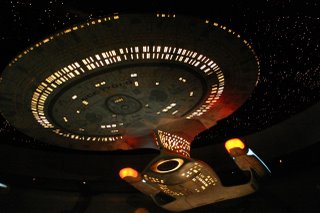
Shining brightly, this pulsar PSR B1257+12 greets its neighbouring three planets every day. Alexksander Wolszczan discovered this extreme planetary system and pulsar in 1992 using a Arecibo Radio Telescope. The pulsar, once an impressive massive star is now a collapsed core of a rapidly rotating neutron star. This shadow of its former self is constantly rotating and pulsing radiation.
Pulsar Solar System
Image Credit: NASA/JPL-Caltech
Supergiants have a mass 10 - 100 times that of our own sun. The larger the star the faster the fuel burns. The nuclear fusion of hydrogen into helium makes a star shine. When the fuel runs out and the star expands into a red supergiant, it has reached the latter stage of stellar evolution. The core cools and contracts suddenly causing an explosion, called a supernova which blasts away the star's outer layers.
This is one place you don't wan't to be when that happens.
"Mr Crusher, Warp 9 , Engage, Engage! Make it so! Comon Wesley, get us out of here!" Panics Picard.
"I Know, I know, captain, don't pressure me. It's that button is'nt it? " cries Wesley horrified.

If the core survives , which it did here just after the Enterprise made her lucky escape, the explosion cools and contracts further into a small, dense neutron star or pulsar. The pulsars three planets are most likely hatchling planets.
Pulsars
Its logical to assume the shockwave from the once mighty star, blew everything to smithereens in its path, leaving behind planet debris and space dust to form new worlds.
Live long and Prosper Trekkers! Star Trekking is fun.


No comments:
Post a Comment